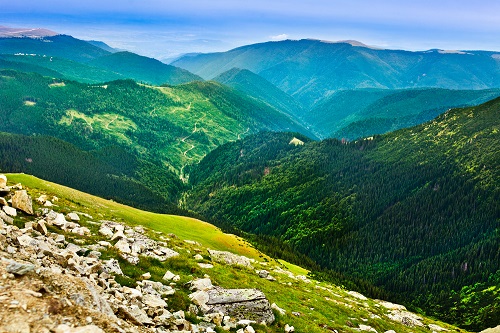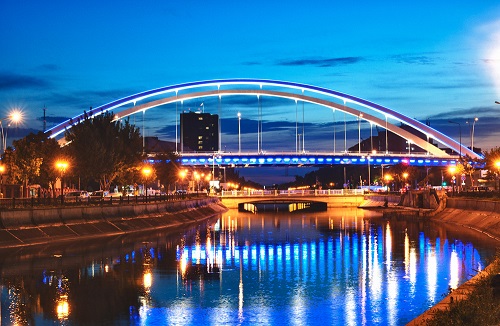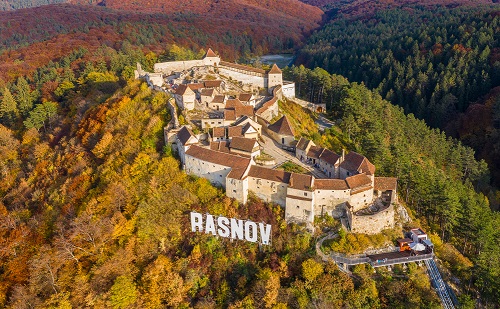Romania has been a centre for spas and thermal springs for generations, perhaps even since before Roman times.Aqua Herculis – the Roman name of Baile Herculane – is even named after the Greek hero/god Hercules, who is said to have bathed in the thermal water there. The inscription “Ad Aquas Herculis Sacras”, from 153 AD, is testament to its history.
Baile Herculane has 16 thermal springs with different mineral properties, which used to be classified according to their alleged properties: “the spring for injuries”, “the spring for cold”, and so on. Locals still believe that they have healing effects, and they are certainly invigorating and relaxing.
Baile Felix is currently Romania’s largest health resort. It is open year-round and was first opened in the 18th century. Its thermal waters are rich in oligominerals and supplemented by sapropelic mud. Devotees say that this is helpful in cases of rheumatism and in treating gynecological afflictions and nervous disorders.
Bazna, near the medieval town of Medias, also has a spa resort, which was established in 1842. It offers treatments based on therapeutic mud and mineral waters plus Bazna salt, which is rich in iodine and bromine.
Eforie Nord on the Black Sea coast offers mud baths, as well as the Gerovital and Aslavital original rejuvenation treatments. Mangalia Spa provides treatments for afflictions related to the kidneys, the digestive and nervous systems, the skin, and the liver.
Overall, you will find a wide range of treatments in Romania, including various forms of massage. Some spas are attached to top hotels, while others are separate and independent. Therme, for instance, near Bucharest, has been described as ‘a theme park of spas,’ and it is considered to be the biggest wellness, relaxation and entertainment centre in Europe.

Thermal spas are only one type of complementary practice that you will find in Romania. Complementary therapies in the country are well regulated. The law of the country covers in the region of 40 types of complementary and alternative medical (CAM) therapies, grouped into six main categories, and this will give you an idea of what is available:
• Biological and pharmacological: apitherapy (using honey bee products), antioxidant therapies, ozone therapy
• Herbal: herbal medicine, aroma therapies, algotherapy and oligotherapy (use of trace minerals)
• Diet/nutrition and lifestyle: Gerson therapies, Feng Shui or vegetarianism
• Alternative: acupuncture, homeopathy, yoga, Ayurveda, Qigong
• Manual: presopuncture (a form of acupressure) and reflexotherapy, osteopathy, massage therapy, Feldenkrais method, chirotherapy
• Bio-electromagnetic and energetic: electromagnetic therapy, crystal therapy, electro-acupuncture, natural and artificial light therapy
The law is not exhaustive; the Ministry of Health may recognize additional therapies as CAM therapies. All providers must be licensed or approved by the Ministry of Health through certified professional training.
Only doctors accredited by the College of Physicians, dentists, and pharmacists are allowed to practice the following therapies:
• Acupuncture
• Homeopathy
• Herbal therapy
• Osteopathy
• Apitherapy
• Chirotherapy
CAM practices are allowed to use the name ‘healthcare centre’ only if they employ at least one medically qualified doctor or one nurse. Otherwise, CAM therapies can be offered by anyone with a university degree and proof of training certified by the Order of Complementary and Alternative Medicine Practitioners.
The Ministry of Health accredits training courses and centres within a special department for continuous education. This publishes CAM courses/training programmes on its website.
The country’s healthcare system, which is experiencing significant challenges, does fund acupuncture. If you are registered with the national healthcare scheme, you will be entitled to receive two acupuncture treatments per year (around €30), with each course lasting no longer than 10 days. You will have to be referred by your GP or a specialist in order for the costs to be covered. All other procedures are paid on an out of pocket basis by clients.
Herbal therapy is legally recognised as a CAM therapy, as above, and you will find extensive phytotherapeutical (herbal medicine) practice in Romania. Only medical doctors, dentists and pharmacists with approved additional qualification, at least a one-year course with a diploma of competences, are allowed to practice phytotherapy in Romania.
The profession is regulated by a specialised committee for herbal therapy, and there is an association of MD phytotherapists. ANATECOR (the national association for CAM therapies) organises courses of herbal therapies for practitioners, approved by the Ministry of Labour.

In medical schools or faculties of pharmacy, students can take optional courses in phytotherapy. As with other CAM therapies in Romania, mainstream medicine has incorporated a number of these practices.
You will find a number of yoga retreats across the country, some of which are vegan. Costs vary but are quoted at around €800 for four-day courses and around €2K+ for longer courses (which can be for up to a month). Some courses are for people who just want to learn or practice yoga, while others are for teacher training. Some centres run joint yoga and hiking programmes. Much of Romania is taken up by the beautiful Carpathian mountains, and you can enjoy the scenery while on your retreat.
Reiki is practiced in Romania, and you will find a number of practitioners, particularly in cities like Bucharest. Kinesiology and holistic massage are also on offer (this can cost from €20 to €30 per session, although prices do vary). The Indian practice of Ayurveda is also found in Romania, and some centres make their own remedies using Romanian herbs.
Some treatments are, if not wholly specific to Romania, certainly traditionally practiced in the region, such as apitherapy (bee stings, micro bee stings, honey massage). As above, this must be carried out by a licensed medical doctor. It is possible to take apitherapy tours in the country, and you may like to consider going on one during your stay. Honey is increasingly being revived as a wound remedy, in conjunction with herbal preparations, such as oil of thyme. There are a number of highly experienced practitioners of apitherapy in Romania.

